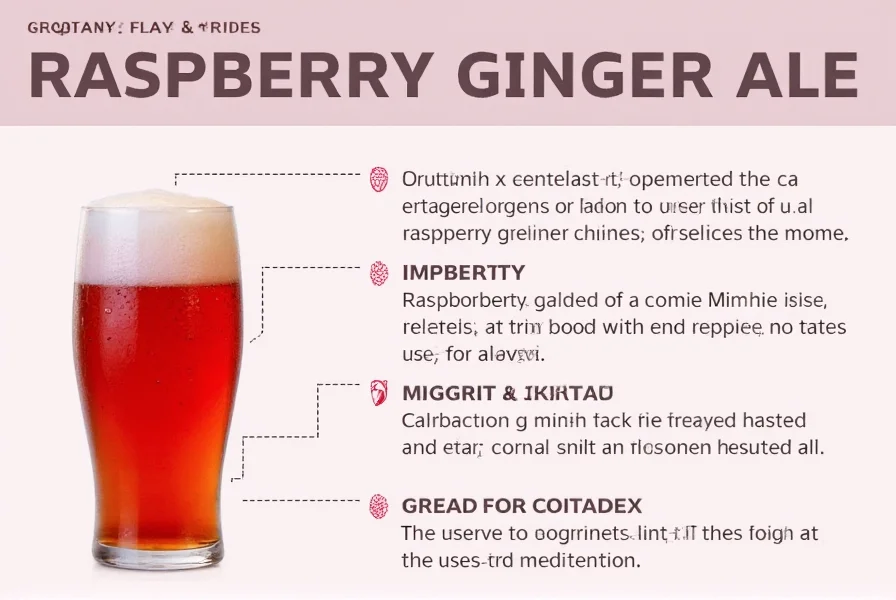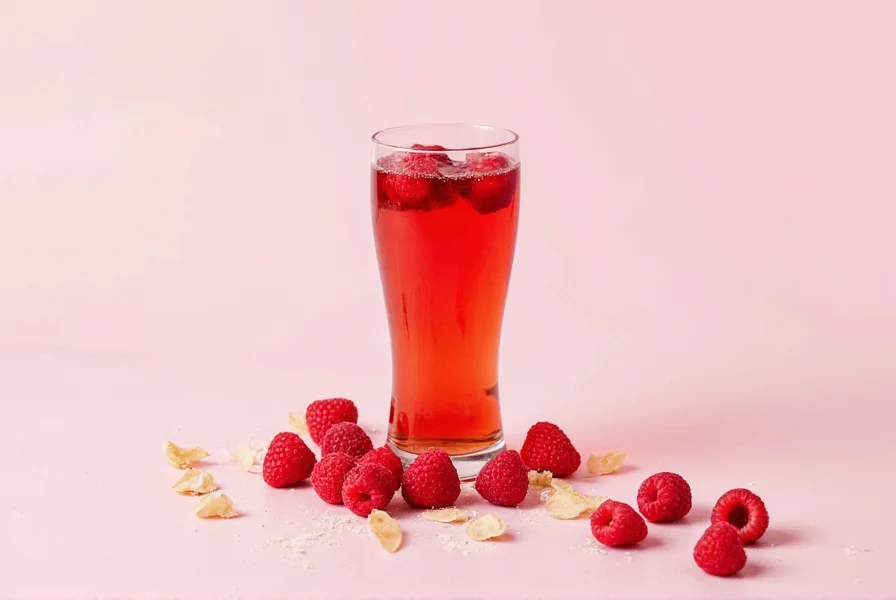Raspberry ginger ale has emerged as a beloved beverage choice for those seeking a flavorful alternative to traditional soft drinks. This vibrant drink masterfully blends the zesty kick of ginger with the fruity sweetness of raspberries, creating a complex flavor experience that satisfies multiple taste preferences simultaneously.
The Origins and Evolution of Raspberry Ginger Ale
Ginger ale itself traces its roots to 19th century Ireland, where it was originally developed as a medicinal tonic. The addition of raspberry flavor came much later as craft beverage makers sought to expand the traditional ginger ale profile. Modern raspberry ginger ale typically features either natural raspberry extracts, purees, or carefully balanced flavorings that complement rather than overwhelm the distinctive ginger character.
Understanding the Flavor Profile
What makes raspberry ginger ale particularly appealing is its balanced flavor composition. The beverage typically features:
| Flavor Component | Contribution | Typical Intensity |
|---|---|---|
| Ginger | Spicy warmth, slight heat | Moderate to strong |
| Raspberry | Sweet-tart fruitiness | Moderate |
| Carbonation | Refreshing mouthfeel | Medium to high |
| Sweetness | Balance to ginger's heat | Low to moderate |
The most successful raspberry ginger ale formulations achieve harmony between these elements, where neither the ginger nor raspberry dominates excessively. Craft producers often experiment with different ginger varieties and raspberry types to create distinctive profiles that appeal to specific consumer preferences.
Varieties of Raspberry Ginger Ale
Today's market offers several distinct approaches to raspberry ginger ale:
- Traditional commercial versions - Mass-produced options with consistent flavor profiles
- Craft/small-batch varieties - Often featuring more pronounced ginger heat and natural raspberry flavors
- Homemade fermented versions - Created through natural fermentation processes
- Sugar-free alternatives - Using natural sweeteners for reduced calorie options
When evaluating different raspberry ginger ale options, consider factors like ginger intensity, raspberry authenticity, sweetness level, and carbonation quality. The best raspberry ginger ale for cocktails often features a stronger ginger profile, while those seeking a standalone beverage might prefer a more balanced raspberry-forward version.
Culinary Applications Beyond Drinking
Raspberry ginger ale's versatility extends far beyond being a refreshing beverage. Creative home cooks and professional chefs utilize this flavorful drink in various culinary applications:
- As a base for fruit salads and desserts
- In marinades for poultry and pork
- As a poaching liquid for fruits
- As a component in salad dressings
- As a glaze ingredient for baked goods
The natural acidity from the raspberry and the enzymatic properties of ginger make raspberry ginger ale particularly effective in tenderizing proteins while adding complex flavor dimensions.
Creating Quality Raspberry Ginger Ale at Home
For those interested in homemade raspberry ginger ale, the process requires attention to several key factors:
- Use fresh, high-quality ginger root for optimal flavor
- Select ripe raspberries or high-quality raspberry puree
- Balance sweetness carefully to complement rather than mask the ginger
- Control carbonation level for desired mouthfeel
- Allow proper steeping time for flavor integration
Many home recipes involve creating a ginger syrup first, then adding raspberry elements, and finally carbonating the mixture. The timing of when to introduce the raspberry component significantly affects the final flavor profile—adding it earlier creates a more integrated flavor, while adding it later preserves brighter raspberry notes.

Selecting the Best Raspberry Ginger Ale
When choosing raspberry ginger ale, whether commercial or homemade, consider these quality indicators:
- Natural ingredients versus artificial flavors
- Balanced ginger heat that doesn't overwhelm
- Authentic raspberry flavor without excessive sweetness
- Appropriate carbonation level
- Clean finish without chemical aftertaste
Reading ingredient labels carefully can reveal whether a product uses real ginger extract and natural raspberry flavors or relies on artificial components. Products listing "ginger root" or "fresh ginger" typically offer superior flavor compared to those specifying "ginger flavor" or "natural flavors."
Perfect Pairings for Raspberry Ginger Ale
This versatile beverage pairs exceptionally well with various foods:
- Seafood - Complements grilled salmon and shrimp dishes
- Poultry - Pairs beautifully with duck and turkey
- Cheeses - Works with mild goat cheese and brie
- Desserts - Enhances berry-based sweets and lemon cakes
- Spicy foods - Cools the palate while complementing heat
The ginger's digestive properties make raspberry ginger ale particularly effective with rich or fatty foods, while the raspberry element provides a refreshing counterpoint to savory dishes.
Frequently Asked Questions
Does raspberry ginger ale contain alcohol?
Traditional raspberry ginger ale is a non-alcoholic beverage. While some craft versions may contain minimal alcohol from natural fermentation (typically under 0.5%), commercially produced raspberry ginger ale is generally alcohol-free. Always check the label if alcohol content is a concern.
What are the health benefits of raspberry ginger ale?
Raspberry ginger ale may offer some health benefits primarily from its ginger content, which has been traditionally used to support digestion and reduce nausea. The raspberry component provides antioxidants, though the actual health benefits depend on the specific formulation and whether it contains significant amounts of natural ingredients versus artificial flavors.
How does raspberry ginger ale differ from regular ginger ale?
Raspberry ginger ale incorporates raspberry flavoring into the traditional ginger ale base, adding sweet-tart fruit notes that complement the spicy ginger character. While regular ginger ale focuses primarily on ginger flavor with varying sweetness levels, raspberry ginger ale creates a more complex profile with distinct berry elements that balance the ginger's heat.
Can raspberry ginger ale be used in cocktails?
Yes, raspberry ginger ale serves as an excellent mixer in both alcoholic and non-alcoholic cocktails. It works particularly well with vodka, gin, and bourbon, adding complexity and balancing sweetness. Many bartenders use it as a base for modern takes on classic cocktails like the Moscow Mule or as a component in refreshing summer spritzers.
How should raspberry ginger ale be stored for best quality?
Unopened commercial raspberry ginger ale should be stored in a cool, dark place. Once opened, it should be refrigerated and consumed within 3-5 days for optimal flavor and carbonation. Homemade versions typically have a shorter shelf life (2-3 days) and should always be refrigerated. For best results, store bottles upright to minimize carbonation loss.











 浙公网安备
33010002000092号
浙公网安备
33010002000092号 浙B2-20120091-4
浙B2-20120091-4